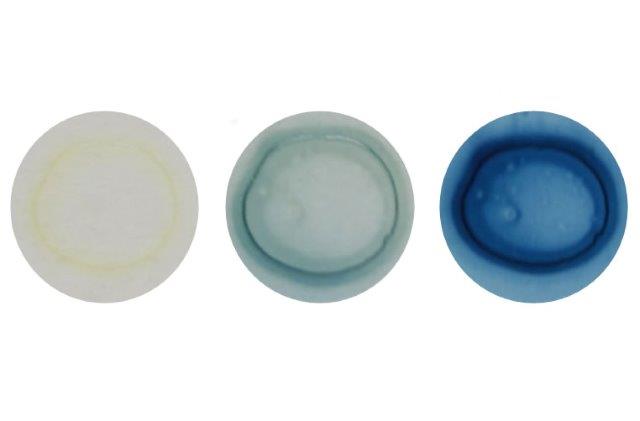FOR IMMEDIATE RELEASE
ACS News Service Weekly PressPac: January 28, 2015
Detecting chemical weapons with a color-changing film
"Thiophene-Fused Tropones as Chemical Warfare Agent-Responsive Building Blocks"
ACS Macro Letters
In today’s world, in which the threat of terrorism looms, there is an urgent need for fast, reliable tools to detect the release of deadly chemical warfare agents (CWAs). In the journal ACS Macro Letters, scientists are reporting new progress toward thin-film materials that could rapidly change colors in the presence of CWAs — an advance that could help save lives and hold aggressors accountable.
In their paper, Timothy M. Swager and Jonathan G. Weis point out that there are many techniques available to detect CWAs. One of the most effective ways for a sensor to show quickly whether chemicals weapons are in the environment is through a distinct color change. Several tests can do this when they’re exposed to CWAs, but of these, most are based on liquids, which are not as practical as thin films. Thin films are critical for real-time detection because they are easier to use and can work continuously. Swager and Weis wanted to address this gap.
With that goal in mind, the researchers produced a new thin-film material and tested it using a substance that mimics a chemical nerve agent. It rapidly changed color in response to the agent. The researchers conclude that a family of such materials could be developed to sense various chemical threats.
The authors acknowledge funding from the Defense Threat Reduction Agency.
###
The American Chemical Society (ACS) is a nonprofit organization chartered by the U.S. Congress. ACS’ mission is to advance the broader chemistry enterprise and its practitioners for the benefit of Earth and all its people. The Society is a global leader in promoting excellence in science education and providing access to chemistry-related information and research through its multiple research solutions, peer-reviewed journals, scientific conferences, eBooks and weekly news periodical Chemical & Engineering News. ACS journals are among the most cited, most trusted and most read within the scientific literature; however, ACS itself does not conduct chemical research. As a leader in scientific information solutions, its CAS division partners with global innovators to accelerate breakthroughs by curating, connecting and analyzing the world’s scientific knowledge. ACS’ main offices are in Washington, D.C., and Columbus, Ohio.
To automatically receive press releases from the American Chemical Society, contact newsroom@acs.org.
Note: ACS does not conduct research, but publishes and publicizes peer-reviewed scientific studies.

View larger image

